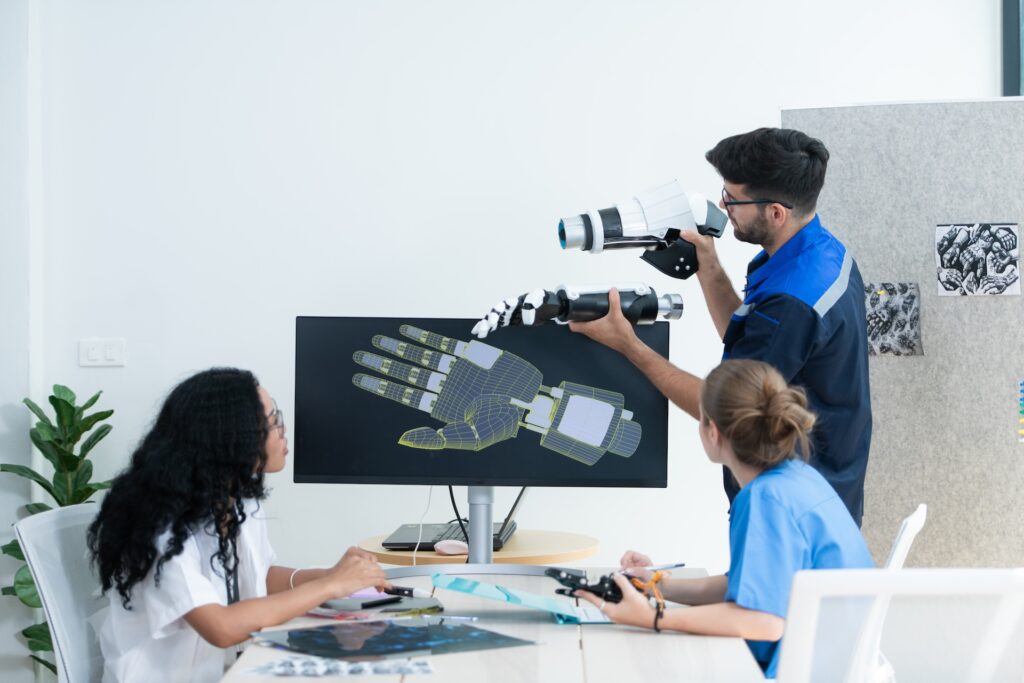Technological Innovations
Our financial support is intended for the implementation of technological investments, which include the purchase and implementation of new technology or the development of our own innovative technology.
The aim of these investments is to launch the production of new or significantly improved goods, processes, or services and to create the conditions for their manufacture.

Which projects qualify for support?
New Technologies: The implemented technologies can take the form of industrial property rights, results of development work, results of applied research, or unpatented technical knowledge. Examples include:
Industrial Property Rights: Patents, utility models, industrial designs, and trademarks.
Results of Development Work: Outcomes of research conducted by scientific units that can be implemented in practice.
Results of Applied Research: Results of research conducted with the intention of direct application in industry.
Unpatented Technical Knowledge: Know-how, trade secrets, and other forms of informal technical knowledge.
Production Launch: Investments must include the creation of a technological base, such as a production line, which will enable the practical application of the new technology and the production of resulting goods or services. Examples of activities include:
Creation of a Production Line: Purchase and installation of machinery and equipment necessary for the production of new products.
Modernization of Existing Processes: Improvement of existing production processes to increase their efficiency and quality.
Development of Technical Infrastructure: Construction or modernization of facilities necessary for the implementation of the new technology, such as laboratories, R&D centers, and production halls.
Wdrożenie technologii, zgodnie z ustawą, polega na realizacji działań, w wyniku których opisany we wniosku o dofinansowanie pomysł na nową technologię zostanie przekształcony w praktyczne zastosowanie. Proces ten obejmuje kilka kluczowych etapów:
Implementation of technology, according to the law, involves carrying out activities that transform the idea for a new technology described in the grant application into practical use. This process includes several key stages:
- Assessment and planning: Conducting a feasibility analysis of the project, including technological, market, and financial evaluation. Creating a detailed implementation plan, which includes a schedule, budget, and identification of key resources and partners.
- Development and testing: Working on prototype development, testing new technologies in laboratory and pilot conditions. Conducting necessary research and analyses to confirm the effectiveness and efficiency of the new technology.
- Building the technological base: Purchasing and installing the necessary technical infrastructure, including machines, equipment, and IT systems. Creating appropriate conditions for the production or provision of services based on the new technology.
- Training and competency development: Organizing training programs for employees to familiarize them with new technologies and production processes. Developing the competencies necessary for the effective implementation and utilization of new technologies.
- Commercialization and market introduction: Activities aimed at bringing new products or services to the market, including preparing a marketing strategy, identifying distribution channels, and establishing cooperation with business partners. Monitoring implementation results and adjusting strategies in response to changing market conditions.
A technology innovation credit cannot be used for the purchase of fixed assets in which the new technology has already been implemented. The implementation of technology, as mentioned in the law, involves actions by the entrepreneur through which the idea described in the grant application as a new technology is transformed into practical use. This includes the creation of a technological base (e.g., a technological line) where the technology can be practically applied, enabling the production of goods or the provision of services directly resulting from the implemented technology.


